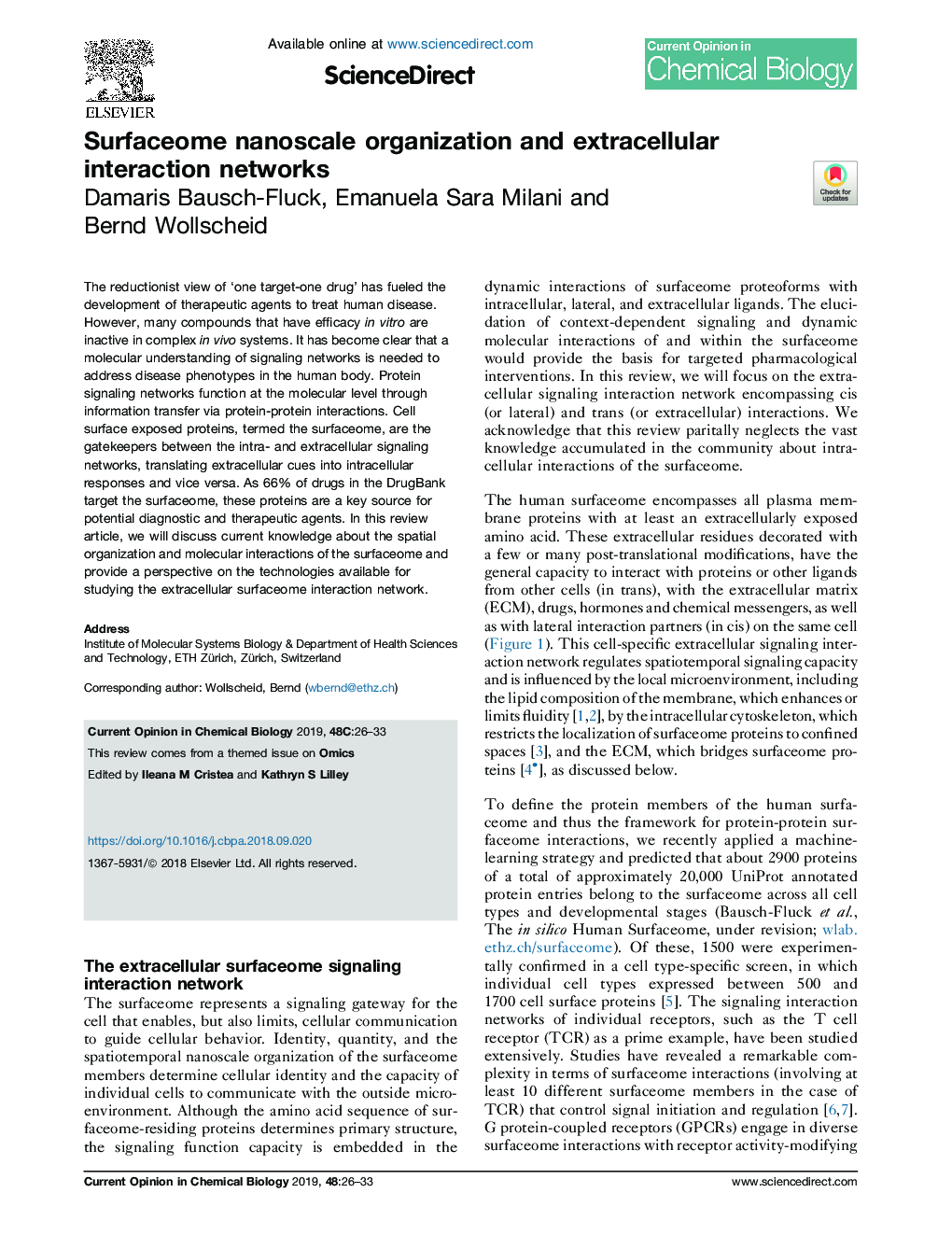| Article ID | Journal | Published Year | Pages | File Type |
|---|---|---|---|---|
| 11031233 | Current Opinion in Chemical Biology | 2019 | 8 Pages |
Abstract
The reductionist view of 'one target-one drug' has fueled the development of therapeutic agents to treat human disease. However, many compounds that have efficacy in vitro are inactive in complex in vivo systems. It has become clear that a molecular understanding of signaling networks is needed to address disease phenotypes in the human body. Protein signaling networks function at the molecular level through information transfer via protein-protein interactions. Cell surface exposed proteins, termed the surfaceome, are the gatekeepers between the intra- and extracellular signaling networks, translating extracellular cues into intracellular responses and vice versa. As 66% of drugs in the DrugBank target the surfaceome, these proteins are a key source for potential diagnostic and therapeutic agents. In this review article, we will discuss current knowledge about the spatial organization and molecular interactions of the surfaceome and provide a perspective on the technologies available for studying the extracellular surfaceome interaction network.
Related Topics
Physical Sciences and Engineering
Chemistry
Chemistry (General)
Authors
Damaris Bausch-Fluck, Emanuela Sara Milani, Bernd Wollscheid,
